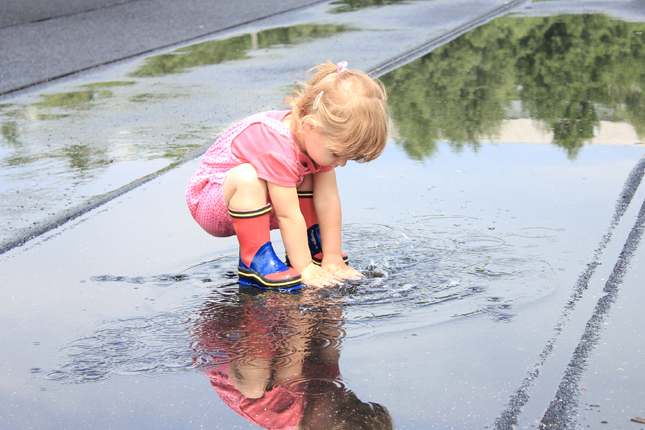Navigating The Terrible Twos: Tips For Handling Toddler Tantrums
The terrible twos is a normal stage of development that begins around ages 2-3, continuing until around ages 3-4. During this phase, toddlers undergo major cognitive, emotional, and social changes as they become more independent.
They are starting to understand language and communicate their needs. However, they still struggle with speaking fluently. They are also working on emotional skills like patience, frustration tolerance, and self-control.
As they realize they are separate individuals from their parents, they also start to assert independence and test boundaries. This clashes with their limited language skills and ability to self-regulate, resulting in frequent meltdowns over seemingly small things.
As a result, tantrums become a primary way for toddlers to communicate big emotions. So it shouldn’t come as a surprise that during these “terrible twos,” children are susceptible to various tantrum triggers. We talk more about this in our episode on Terrible Twos or Terrific Twos?

Here are some common scenarios that may set off a tantrum:
- Biological Factors:
- Hunger: An empty stomach can quickly lead to irritability and meltdowns.
- Fatigue: A toddler who has not had enough sleep may struggle to regulate their emotions and become easily overwhelmed.
- Overstimulation: Too much excitement or overwhelming sensory input can be triggering.
- Frustration with Independence:
- Hitting Roadblocks: When attempting to do something independently, a toddler may encounter obstacles that trigger frustration.
- “No” or Loss of Control: Being told “no” or having a desired object taken away can lead to tantrums.
- Communication Challenges:
- Difficulty Expressing Needs: When a toddler struggles to communicate their wants, needs, or frustrations, they may resort to tantrums.
- Task-Related Frustration:
- Challenging Activities: Tasks or activities that are too difficult or require more skill than the toddler possesses can cause frustration.
- Boredom or Understimulation:
- Lack of Engagement: When a toddler is bored or understimulated, they may create their own excitement through tantrums.
- Emotional Triggers:
- Jealousy or Unfairness: Witnessing a sibling or another child receiving more attention or benefits can trigger feelings of jealousy.
- Conflicting Feelings: Complex emotions, such as love and hate or wanting something but fearing it, can lead to emotional turmoil and tantrums.
Understanding these triggers can help parents anticipate potential tantrum-inducing situations. Then they can implement strategies to prevent or manage them effectively. Here are some tips:

- Stick to a routine. Toddlers thrive on routine and predictability. Establishing a regular schedule for meals, snacks, naps, and bedtime can help prevent metabolic triggers like hunger and fatigue, which can lead to tantrums.
- Offer choices. Whenever possible, offer your toddler a choice between two appropriate options. This gives them a sense of independence and control and can help prevent power struggles.
- Keep instructions and limits simple, clear, and consistent. Toddlers may tantrum if they are overwhelmed by too many rules or if the rules are not consistently enforced. Use simple, clear language and be consistent with your expectations.
- Build in transition times. Toddlers can have difficulty transitioning from one activity to another. To help ease the transition, build in some extra time and give your child a warning before it's time to switch activities.
- Take breaks. If your child seems overwhelmed or overstimulated, take a break for some quiet one-on-one time. This can help your child calm down and regulate their emotions.
- Ensure adequate nutrition, hydration, sleep, and physical activity. A lack of sleep or poor nutrition can also contribute to tantrums. Make sure your toddler is getting adequate sleep, eating a healthy diet, drinking plenty of fluids, and getting regular physical activity.
- Remove or child-proof objects that tend to provoke conflict. Some objects, such as certain toys or items that are off-limits, can be a source of conflict and frustration for toddlers. Remove these objects or child-proof them to help prevent tantrums.
How To Handle Tantrums
Even with preventive measures, tantrums are going to happen sometimes. When your toddler melts down, try this approach:
- Stay Calm: The calmer you remain, the easier it will be for your child to settle down. Speak softly, move slowly, and avoid showing anger or frustration. Getting visibly upset often escalates tantrums.
- Validate Feelings Simply acknowledging your child's emotions can have a powerful effect. You might say “You're really mad we can't go to the park. I know, leaving is disappointing.” This teaches emotional intelligence.
- Distract or Divert Once the peak of the tantrum has passed, try changing the scene or introducing an new activity. Sing a silly song, read a book, or move to a different room. This redirects their attention.
- Offer Hugs As emotions settle, give your child a gentle embrace if they'll accept it. The human contact can be comforting during the wind-down phase.
- Model Ideal Behavior After a tantrum, calmly restate expectations in a positive way: “Nice job calming down. Now we can use inside voices and make good choices.”
- Provide Time-Ins: If needed, remove your child from overwhelming situations by sitting together in a quiet, boring place until they regain self-control.
When dealing with a child's tantrum, certain approaches should be avoided as they may reinforce, prolong, or escalate the challenging behavior. Here are some of the things you don’t want to do:
- Giving in to demands after a tantrum: This approach essentially rewards the tantrum behavior and reinforces the notion that the child can get what they want by throwing a tantrum. It teaches the child that tantrums are an effective way to communicate their needs and desires.
- Punishing during the peak of a tantrum: Punishment during the peak of a tantrum can escalate the negative emotions already present. When a child is in the midst of a tantrum, their emotional state is heightened, and punishment can be perceived as unfair or unjust. This can lead to increased anger, frustration, and potentially even more intense tantrums.
- Ignoring or sending to time-out: Ignoring a child during a tantrum or sending them to time-out may seem like a simple solution to remove yourself from the situation. However, this approach can be perceived as unempathetic and dismissive of the child's feelings. It may trigger feelings of abandonment anxiety, causing the child to feel alone and unsupported.
- Yelling, threatening, or criticizing: Yelling, threatening, or criticizing a child during a tantrum only models the inappropriate behavior you are trying to discourage. It sets a negative example and teaches the child that it is acceptable to express emotions in a hostile or aggressive manner. This approach can escalate the situation and create a power struggle between the child and the caregiver.

Final Thoughts
As maddening as they can be in the moment, tantrums are a normal part of toddler development. Thankfully, they are also temporary.
When you take a thoughtful approach to them, they become more manageable. Look at the bright side: these struggles of terrible twos are building emotional skills your child needs to thrive down the road. They are simply turning into complete humans who understand the world around them better!